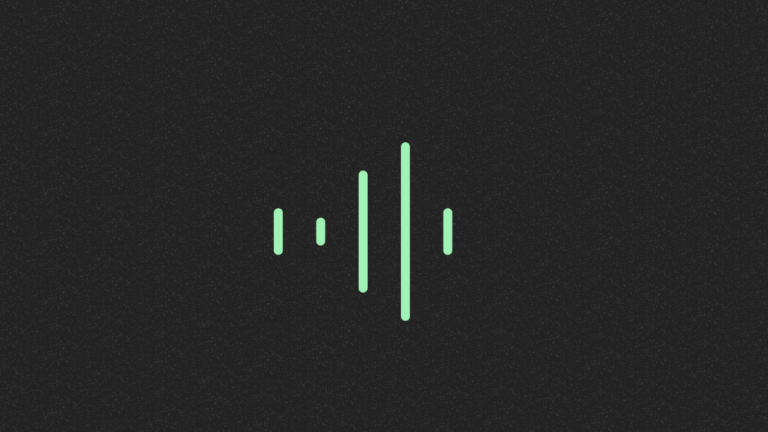Audio by Lyric K. using WellSaid

Recently, the sharp rise in AI technology has revolutionized media production, especially in the realm of audio and voiceovers. For filmmakers, voiceovers play a critical role in storytelling by adding depth, guiding narratives, and engaging audiences. Traditionally, voiceovers required professional narrators and expensive recording equipment. However, AI has emerged as a powerful tool to create high-quality documentary voiceovers, providing faster, more affordable, and highly customizable options for filmmakers.
The Rise of AI Voiceover Technology
AI voiceover technology is rooted in the development of text-to-speech (TTS) systems, which have historically been used in industries ranging from customer service to accessibility tools. However, in recent years, these systems have evolved into sophisticated AI-driven voice generators that can mimic human speech with surprising accuracy.
These AI voice generators use advanced algorithms, neural networks, and natural language processing (NLP) to convert written text into speech. Their systems analyze patterns in language and vocal intonation and then synthesize realistic-sounding voices. Some platforms go a step further by offering deep learning models that can clone specific human voices. As AI technology improves, filmmakers are increasingly adopting AI voiceover for documentaries, allowing them to automate large parts of the production process.
Why Choose AI Voiceovers for Documentaries?
As AI becomes a go-to solution for media creators, there are several reasons why documentary filmmakers are turning to AI for voiceovers.
Benefits
Cost Efficiency
Hiring a professional voice actor or recording voiceovers in-house can be expensive, especially for independent filmmakers with tight budgets. AI voiceover tools eliminate the need to hire voice actors or book studio time, effectively cutting those costs. AI voiceover platforms are available at a fraction of the cost, making it a viable option for filmmakers of all scales.

Time-Saving
With AI voiceovers, turnaround time is dramatically reduced when compared to recording a live voice. Once the script is finalized, you can generate the voiceover in seconds, allowing you to focus on other aspects of the project without waiting for voice talent or extensive editing.
Flexibility and Customization
AI voiceover tools offer unparalleled flexibility and customization. With a wide variety of voices, languages, and accents to choose from, filmmakers can cater their documentaries to diverse audiences. Additionally, script changes are easier to implement; when a line needs to be rewritten, you can simply adjust the text and regenerate the voiceover instantly—no need for re-recording sessions.
Consistency and Scalability
When working on larger projects like multi-part docuseries, voiceover consistency is crucial. AI-generated voices ensure a consistent tone, style, and pacing across the entire project. This scalability allows creators to maintain uniformity in narration without worrying about performance changes, which can fluctuate over time or with different narrators.
Limitations and Ethical Considerations
While AI voiceovers offer many advantages, they are not without limitations and ethical challenges.
Challenges of AI Voiceovers
Despite significant advancements, AI voices still struggle to fully capture the depth of human emotion. AI-generated voiceovers may sound robotic or lack the nuanced tone required for complex narratives. Emotional authenticity, which is a key component of storytelling, can sometimes be lost with AI.
Ethical Implications

The rise of AI voiceovers has also sparked debates within the creative community. Many voiceover artists worry about being replaced by AI as it can replicate voices at a fraction of the cost. Furthermore, the misuse of AI-generated voices raises concerns about deepfakes—fake audio or video content that can deceive audiences. The ethical implications of using AI in voiceover work must be carefully considered, especially as the technology continues to evolve.
If you’re looking to employ an AI voice generator, make sure to thoroughly vet the platform for its position on ethics and voice cloning to ensure it aligns with your goals.
How to Create a Documentary Voiceover Using AI
Creating a documentary voiceover with AI is a straightforward process that can be broken down into key steps:
Script Preparation
Write a script optimized for AI narration. Keep sentences clear and concise, avoiding overly complex structures that may confuse the AI. Consider the pacing and emotional tone when writing, as this influences how the AI voice delivers the narrative.

Choose the Right AI Voiceover Tool
There are numerous AI voiceover platforms to choose from, each with different features and price points. When selecting a platform, consider factors such as voice quality, customization options, licensing agreements, and stances on ethical AI.
Customize the AI Voice
Once you’ve chosen a platform, you can customize the AI voice to fit your documentary’s tone. Adjust pacing, emotion, and emphasis to better align with your story. Many platforms offer multiple voice styles, giving you the flexibility to switch between formal narration and conversational tones.
Integrate with Documentary Footage
Ensure that the AI-generated voiceover matches the pacing of your visuals and that key moments in the script align with the scenes on screen.
Final Edits and Sound Mixing
Finally, the AI voiceover must be polished through sound mixing and editing. Ensure that the audio levels are consistent and integrate seamlessly with any background music or ambient sound. This final stage is crucial in maintaining professional quality.
Why choose WellSaid?
With the many AI voice generators on the market, it can be hard to choose the best one that fits your specific needs. At WellSaid, we pride ourselves on being the safest and simplest AI voice generator, with the closest human parity.
Consistent Quality
If you have to make changes to a script and need to re-record the voiceover, you run the risk of inconsistencies in the sound of the voiceover in the final project. With WellSaid you’ll have the exact same quality every time.
Secure, closed-data model

Our closed-data system ensures that our customer data is secure, protected from inappropriate use, and is never shared externally or used to train our model. We claim no rights to your intellectual property or the voiceovers you create with WellSaid, and moderate our content to make sure it’s not being used in unlawful or harmful ways.
Ethical AI
Ethics is the backbone of WellSaid. Every voice you find on our platform is built with the explicit written consent of the voice talent who provide us with their voice data, and who are compensated for their work. We will never clone someone’s voice without their written approval.
Time and cost savings
The average cost of audio by a voiceover artist can sometimes reach $200 per minute. With WellSaid, you can get over 6,000 minutes of voiceover for around $200 a month. Additionally, when using a professional voice actor or an employee to record voiceovers, it can take several days or weeks to get the recording done, especially when there are last minute script changes. With WellSaid, you can create a take, edit the script on the fly, and finalize a voiceover in seconds.
Interested in WellSaid?
All in All
AI voiceovers have revolutionized how documentaries are produced, offering cost savings, flexibility, and faster turnaround times. While there are still challenges in achieving emotional depth and concerns about the replacement of human talent, the future of AI voiceovers is promising. As AI technology continues to evolve, it will likely become an even more valuable tool for filmmakers.



